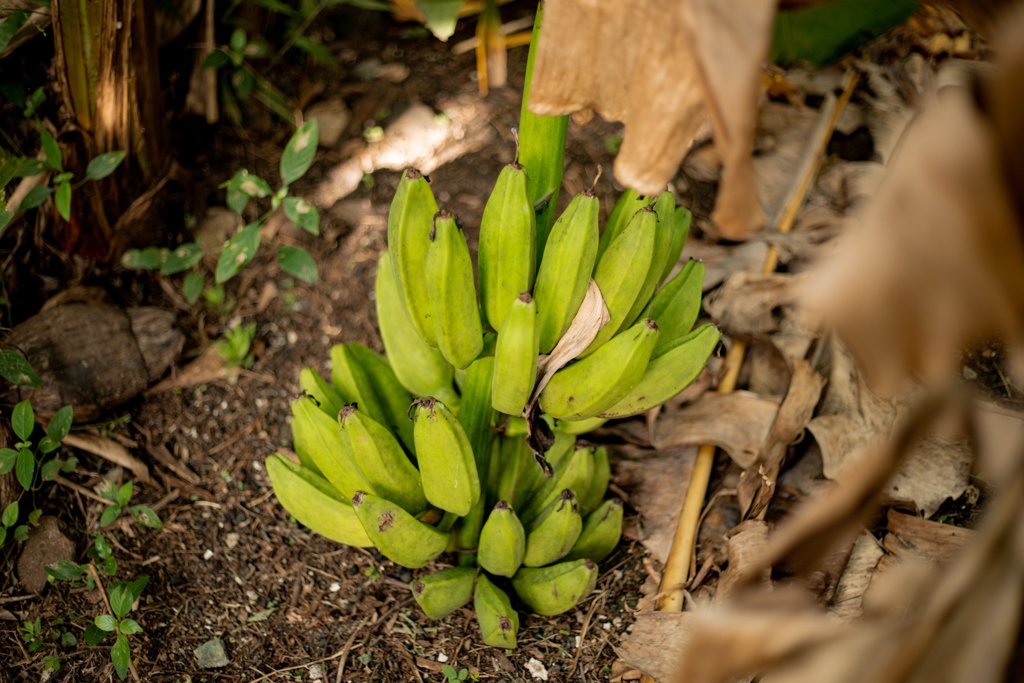The People of Before
The CHamorus, the indigenous people of the Marianas Islands, first migrated from inland Southeast Asia roughly 4,000 years ago. A second wave of migrants arrived approximately 1,000 years ago, bringing with them knowledge of latte architecture and rice cultivation.[1] Ancient CHamorus were skilled fishers and horticulturalists, adapting to their new environments and transplanting the foods that sustained them in their places of origin. The people of the Marianas are said to be the only recorded island civilization to have cultivated rice in what has today been geographically defined as the Pacific region. Early Spanish onlookers observed how some islands were more productive in the planting and harvesting of rice and thus were capable of supplying other islands with lesser quantities. [2]
From the collection of the Richard F. Taitano Micronesian Area Research Center
The ancient CHamoru diet consisted of other starchy foods to include two varieties of yam and two varieties of breadfruit. Taro was also planted in dry soil as well as in swampy areas. Bananas, coconuts, and sugarcane also served as staple foods.[3] The islands had some citrus fruits, but most of the local varieties consumed today were introduced by during the Spanish colonial period.[4] Betel nut, called pugua, was also harvested and taken with the betel pepper vine called pupulu.[5] Although not consumed as a source of sustenance, the betel nut was valued for its narcotic properties and could have been used as an appetite suppressant.[6]
Massive cultivation was not widespread due to several reasons. For one, many of the crops mentioned above grew wildly abundant. Some crops grown without cultivation included gapgap, nika, dago, papao, and baba.[7] Root crops were especially resilient – an important quality for a population threatened by typhoons and subsequent famine. For emergency purposes, root crops were stored in stockpiles surrounded by wooden fences and covered in coconut leaves. They could remain there for long periods of time while freshly dug up roots fulfilled the people’s immediate needs.[8]
Water was also difficult to supply in areas without running water, so large vessels were used for transport. [9] When cultivation was necessary, however, small parcels of land were cleared using burning techniques and ancient cutting tools. Wells were also dug from nearby slopes for irrigation. [10] Among the planting techniques that intrigued Spanish settlers were those applied to the coconut and breadfruit. Coconuts were cultivated with relative ease, most taking root after falling naturally from the trees. [11]They could be seen buried in soil hardly covering their entire surface or sprouting from the sand. Breadfruit, on the other hand, was planted according to the phases of the moon using a technique that required making incisions in the roots to grow new shoots. [12]
Among the pre-contact tools mentioned by Spanish settlers included the dagau, a stick between 2-4.5 inches long made of either gago (ironwood) or mangrove. [13] This was equated to a pick-axe or a mattock and was used to carry loads or as a weapon. The akoa was another tool consisting of a wooden stick with a stone attached to it via a strong cord. The stone was later be replaced with an iron blade and resembled the Spanish spade. For the purpose of clearing land or cutting plants, a cutlass referred to as damang was used until it was replaced with the Spanish machete. Mussel shells and woven baskets and mats of varying sizes were also used for harvesting and processing rice.
As far as protein sources go, nothing existed in the way of domesticated animals or livestock in pre-contact Guam. Some scientists suggest that fruit bat was a part of the ancient CHamoru diet along with a type of dove they kept in cages and occasionally used for bird fighting. [14] Due to these conditions, ancient CHamorus turned to seafood as their main protein source. Varieties of fish were caught both inside and beyond the reef, and shellfish was also harvested. Freshwater organisms found in Guam’s rivers such as eels and shrimp could have also served as accessible food sources. [15]







